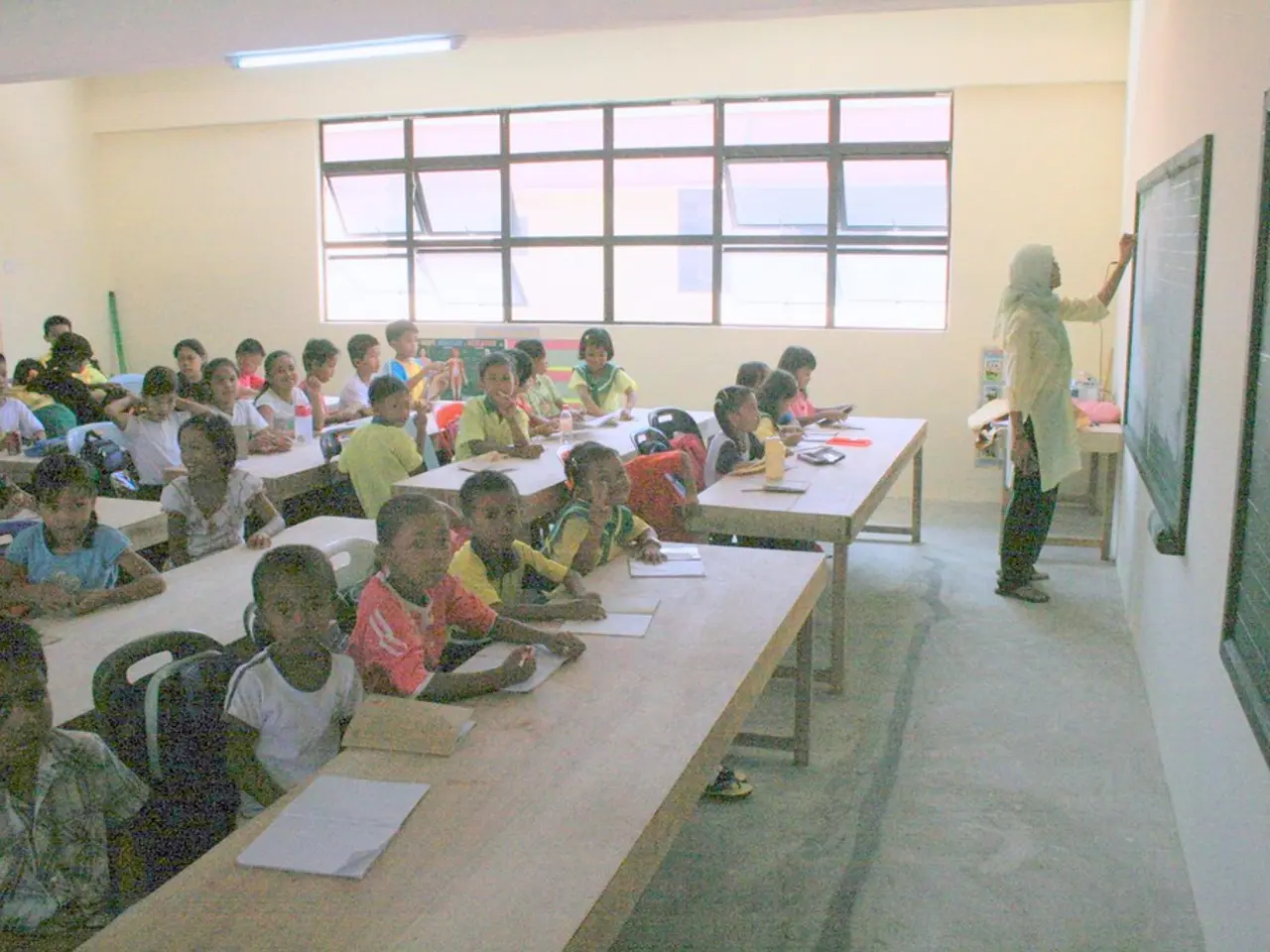Examining Education's Literacy Requirements and Guidelines
**Transforming Literacy Standards: A Focus on Clarity, Diversity, and Digital Skills**
In today's rapidly evolving world, literacy standards are undergoing a significant transformation, with a growing emphasis on both traditional reading and writing skills and emerging digital literacies. This shift is having a profound impact on student achievement.
**A National Push for Reading Culture**
The UK Department for Education has launched the National Year of Reading 2026 campaign, aiming to reverse the decline in children's reading for pleasure. This initiative, involving parents, schools, libraries, and literacy experts, seeks to foster a love of reading, a critical factor in giving children the best start in life and improving literacy outcomes.
**Embracing Digital Literacy**
Recognising digital literacy as integral to modern literacy standards, frameworks such as the EU’s Digital Competence Framework for Citizens (DigComp), the UK's Digital Abilities Framework, UNESCO’s Digital Literacy Global Framework, and frameworks from countries like China, define literacy beyond traditional reading and writing to include digital skills such as information literacy, digital content creation, communication, safety, and problem-solving.
**Integrating Computer Science and Digital Literacy**
Education standards are evolving to integrate computer science and digital literacy from early grades through high school. More states and educational boards now mandate computer science education from kindergarten up and increasingly require it for graduation, preparing students with the competencies necessary for a digital world.
**The Role of AI in Literacy Learning**
Artificial Intelligence (AI) is emerging as a key tool in education, offering personalised tutoring, lesson creation, data-driven insights into student performance, automatic grading, and improved accessibility for students with learning difficulties. These AI applications enable tailored literacy instruction, better addressing individual student needs and boosting achievement.
**Impact on Student Achievement**
These advancements are collectively improving student engagement, skill development, and academic achievement in literacy. Enhanced engagement through campaigns like the National Year of Reading 2026 aims to increase motivation and engagement in reading for pleasure, a critical predictor of literacy success and lifelong learning.
Updated frameworks that include digital literacy equip students with essential 21st-century skills necessary for academic success and future employment. AI-driven tools and data analytics allow educators to pinpoint learning gaps and customise interventions, leading to more effective literacy instruction and improved outcomes.
Early and continuous exposure to literacy standards from early childhood through secondary education ensures continuous development of foundational and advanced literacy skills, supporting sustained academic achievement.
**The Necessity of Clarity and Diversity**
Effective literacy standards must encompass clarity, coherence, and rigour. Cultural and linguistic diversity requires specialized strategies and resources to cater to diverse learning needs. Collaboration among educators, policymakers, and community organizations is essential for advancing literacy initiatives and ensuring equity in literacy education.
Aligning literacy standards with cultural and linguistic contexts allows educators to address the unique needs of diverse learners. The International Reading Association's Standards for the English Language Arts and the Common Core State Standards are prominent literacy frameworks that emphasise the importance of understanding cultural and linguistic diversity.
In conclusion, the latest literacy standards are expanding to embrace comprehensive digital literacies, supported by technological innovations and national efforts promoting reading culture. These advancements are collectively improving student engagement, skill development, and academic achievement in literacy.
- Bilingual education, which caters to diverse linguistic backgrounds, becomes a necessary instructional strategy in adhering to evolving literacy standards that emphasize a focus on cultural and linguistic diversity.
- Professional development programs and e-learning platforms should be prioritized to equip educators with the skills required to implement effective digital learning strategies, ensuring a smooth transition into the digital age.
- The integration of education-and-self-development initiatives such as personal-growth seminars and workshops, focusing on enhancing learning through digital means, fortifies individuals' abilities to adapt and thrive in the rapidly evolving digital landscape.




